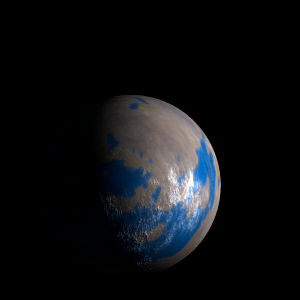|
|
Space Astro
|
Info for exoplanet "Dunuwy-m"
| Scientific (actual) data |
|---|
| Planet | Kepler-1432 b |
| Planet status | Confirmed |
| Radius | 0.198 |
| Orbital period | 23.9109 |
| Discovered | 2016 |
| Updated | 2021-02-05 |
| Tconj | 2454980 |
| Publication | Announced on a website |
| Detection type | Primary Transit |
| Alternate names | 2MASS J19420580+4949463 b, K03116.01, KIC 11720424 b, KOI-3116 b, KOI-3116.01, WISE J194205.75+494946.4 b |
| Star name | Kepler-1432 |
| Right ascension | 295.52° |
| Declination | 49.83° |
| Mag j | 14.268 |
| Mag h | 13.95 |
| Mag k | 13.97 |
| Star distance | 1552 |
| Star metallicity | 0.02 |
| Star mass | 1.09 |
| Star radius | 1.13 |
| Star age | 3.47 |
| Star temperature | 6031 |
| Star alternate names | 2MASS J19420580+4949463, KIC 11720424, KOI-3116, WISE J194205.75+494946.4 |
| Wikipedia article | Kepler-1432 b |
Back
| |
| Fictional info (?) |
|---|
| Suggested name | Dunuwy-m |
| Planet type | Cold planet |
| For this reason, scientists often classify Dunuwy-m and Muqyq Ajewus as "cold planets" to distinguish them from the other planets. The planet is named after the deity Dunuwy-m, the god of love and beauty.
The planet telescopically displays the complete range of phases, similar to Venus and the Moon, as it moves in its inner orbit relative to Kepler-1432, which reoccurs over the so-called synodic period approximately every 110 days.
Plans have been proposed for rovers or more complex missions, but they are hindered by Dunuwy-m's hazardous precipitation.
A prominent result is the "great yellow spot", a giant storm that is known to have existed for centuries since it was first detected by scanner. |
| Atmosphere | Hydrogen | 87% |
| Ozone | 7.9% |
| Carbonyl sulfide | 3.9% |
| Ammonia | 0.088% |
| Sulfur dioxide | 0.0012% |
| Atmospheric pressure | 1.2 bar |
 |
| No known satellites |
| Google search for Dunuwy-m |
|
Website by Joachim Michaelis
|
|
|
|